History of Game Design: The Suprisingly Ancient Origins of Pinball
Pinball may seem like it has always been around, but where did it come from? This article looks at the ancient historical beginnings of this game, and how it evolved into what we know today.


The following article is a reproduction, and has been modified for this site. The original article, and many more, can be found at RemptonGames.com
When I think of Pinball machines my mind is filled with contradictions. With its blinking electronic displays and sounds it seems incredibly modern, and yet its inherently mechanical nature makes it feel like a relic of a bygone era. Its mechanics are so simple, and yet mastering them and learning the unique intricacies of a particular machine can be incredibly difficult.
One thing it isn’t, though, is boring. Whether you were shoving quarters into the machine at your local bar, standing in line at the arcade, or (like me) spending all of your time on your parents PC playing Space Cadet, almost everyone can relate to the joy of pulling back that plunger and watching that silver ball bouncing around the cabinet.
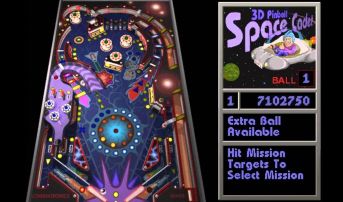
I actually have to go, something very important has just come up….
While Pinball machines may feel timeless, they haven’t been around forever. In today’s article I am going to look at how Pinball went from ancient people throwing rocks in fields to the slick game we know today. Along the way we will also take a look at how one skilled player helped stop Pinball machines from being banned forever.
Lets Start at the Very Beginning
The origin of pinball actually begins not with an arcade cabinet, but with a grassy field. The earliest evidence of Pinball’s ancestors dates to around 7,000 years ago, where an ancient Egyptian image shows two people playing a game that appears similar to modern Bocce.

Artists rendering
Bocce is a relatively simple game in which a small ball (which acts as a target) is thrown into the playing area, and two teams take turns throwing heavier balls into the area in an attempt to get as close to the target as possible. This game is part of a larger family of similar games, which can be found all around the world.
This game is often played outdoors on a relatively large (up to 90 foot long) field, and may seem to have little resemblance to modern pinball. In fact, it would take several evolutions and transformations throughout thousands of years of history for this game to evolve into the pinball we know today.
The first evolution occurred when players made the transition from simple games of throwing balls into the field to slightly more complex games that added additional obstacles. Many of these games made the transition from using a player’s hands to throw the ball to using some sort of mallet or club to hit the ball with instead.
Games that use mallets to strike a ball in an outdoor field can be found going back at least 4,000 years, with the game of Hurling in Ireland being one of the earliest examples. While the exact rules and goals of these games differ, they are all similar in that they involve either individuals or teams moving a ball around a field by hitting it with some sort of stick.
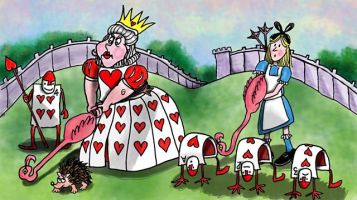
The mallets were only occasionally Flamingos
These early stick and ball games are the ancestors to many modern games, including Polo (a similar game played on horseback), Golf, and Croquet. When looking at these games you can see the beginnings of what pinball would become – players are trying to hit the ball around the field through specific obstacles or goals. Even so, there is still a long way to go.
The next major step towards pinball occurred when these outdoor games began to move indoors. While many of the rules remained similar, the playing field was often compressed to fit on a table or on the floor. The early indoor versions of these games would become the ancestors of some modern games, such as Billiards, Bowling, and Shuffleboard.
The most important of these for the development of Pinball is the Billiards table. Indoor Billiards games have been around since the mid to late 1400’s, and took many different forms. Early indoors billiards games actually resembled Croquet, with various hoops around the board. These games would eventually evolve into the modern billiards games we know today, such as 8-ball Pool.
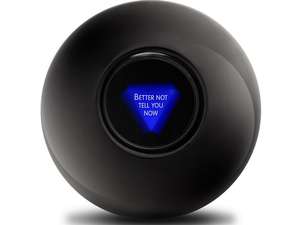
Which would evolve into a source of incredible life advice
One particularly important game in the development of modern pinball is the game of Bagatelle, which first appeared around the mid 1600’s. This game was somewhat of a hybrid between Billiards and Bowling, and was played on a billiards table with pockets at one end which were guarded by a series of pegs. These pegs were likely derived from bowling pins, but rather than knocking down the pins the goal of the game was for players to shoot the ball from the opposite end of the table, bounce past the obstacles, and land in the pockets. Because the pins took too long to set up after being knocked back down they eventually became fixed into place as part of the table.
By taking the game of Bagatelle from the pool table back outdoors, it is easy to see the influence that it had on the development of modern miniature golf. It was also a very important influence on a much less well known game called “Japanese Billiards” which, despite its name, was invented in Europe. This game was quite similar to Bagatelle, but with a few changes.
First, it used metal pegs instead of the wooden pins common in older versions of the game. Second, rather than hitting the ball across the table with a cue this version of the game used a spring-loaded launcher to hurl the ball across the table to the other side. This game, which appeared somewhere in the mid 1700’s, is not only the direct ancestor of modern pinball but also the actually Japanese game of Pachinko.

VERY Japanese
This brings us finally to the first game that might actually be called Pinball as we know it, which was invented by Montague Redgrave in 1871. Montague applied for a patent under the name “Improvements to Bagatelles” which, in addition to claiming credit for the spring-loaded launcher, also shrunk the table even further to allow it to fit on top of a bar and used small marbles instead of billiards balls.
The first mass-produced, widespread pinball machine wouldn’t appear until 1931, with a game known as Baffle Ball. While the first Pinball machines were closely designed after Bagatelle, Baffle Ball adjusted the formula and provided a blueprint for future machines. Baffle ball gave players 10 balls for a penny, and players would use the spring to launch the ball and try to land in various holes which are each worth different amounts of points to earn a high-score.
Baffle Ball ended up being a huge success, and sold around 50,000 units. This sparked an explosion of interest in Pinball manufacturing, and the next decade saw an incredible amount of innovation in design. The first big innovation was the addition of electricity to provide lights and sounds to the machines, to draw in and entertain players. Common Pinball mechanics, such as the tilt mechanic (which prevents players from lifting or shaking the device) and the ability to earn additional games / balls were also invented around this time.
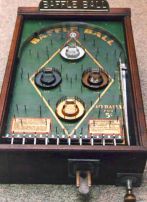
If you think THIS is baffling, you ain’t seen nothin’ yet
However, none of these innovations were as essential to the development of Pinball as the addition of mechanical flippers in 1947, in a game called Humpty Dumpty. Prior to the addition of these flippers launching the ball was the only way players could interact with the ball during the game. However, the addition of flippers allowed players to have more control over the ball, and keep it in play longer.
While Humpty Dumpty introduced the usage of flippers, they were not exactly the same as modern Pinball flippers. While modern games usually have two flippers facing inwards at the bottom of the board, early games with flippers were much less consistent about the placement. The first game to have flippers the way we know them today was Spot Bowler in 1950, and it soon became standard in most machines.
Over the next few decades Pinball technology continued to advance. As electronics and computers became more sophisticated so too did the Pinball machines, and electronic scoring and displays allowed for more and more adventurous designs. However, while improvements in technology fueled the Pinball boom of the 60’s and 70’s, it would also mark their decline.
The advent of arcade video games would begin a drop in popularity among Pinball machines, but also served as the motivation to spark new innovations. As Pinball designers sought to win back their audiences from the arcades they added unique features and more complicated designs to their Pinball tables, such as ramps, slides, multiple balls and even adding additional layers of depth to the tables.
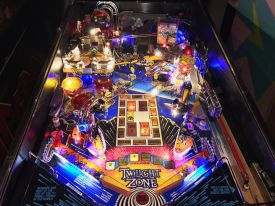
Now THATS what I call baffling!
While Pinball machines have never been able to regain the level of popularity that they had in the mid 20th century, they remain a common site in arcades, bars and restaurants around the country. Both physical machines and digital versions remain a common pastime among players both young and old, and an avid community of Pinball collectors and historians has grown around the hobby.
The Sharpshooter Who Saved Pinball
While we have covered the history of Pinball’s design, there is one other area worth mentioning – the moral and legal issues that surrounded Pinball for much of its life. While it may seem difficult these days to imagine how Pinball could possibly be at the center of a moral panic, that hasn’t always been the case. Pinball has had it’s fair share of controversy, but the story of it’s ban in New York particularly stands out.
In the early days of Pinball, particularly before the widespread adoption of flippers, Pinball machines were actually often considered to be a form of gambling. Simply launching the ball was considered to be based on luck, and high scores and other achievements in the game could often be traded in for cash or prizes.
Because of this association with gambling Pinball soon became a target, and around the early 1940’s Pinball machines were banned in numerous cities around the country. These cities included Los Angeles, Chicago and, most prominently, New York City.
In fact, Pinball machines were considered a game of chance and were not made legal in New York City until 1976. This ruling was only overturned when a particularly talented player, Roger Sharpe, testified that Pinball games were a game of skill, not of chance.
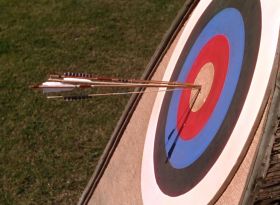
Citation needed on whether he stole from the rich and gave to the poor, so for now we can only assume he did.
To prove his point, Sharpe chose to demonstrate to the judges. He brought a Pinball machine into the courtroom and proceeded to call his shots, landing the ball exactly where he predicted. This demonstration was enough to convince the judges of the skill involved, and the ban was lifted. Several other major Pinball bans were removed around this same time, some of which may have been influenced by this ruling.
Until Next Time!
That is all I have for this week. If you enjoyed this article, check out the rest of the blog and subscribe on Twitter, Youtube, or here on WordPress so you will always know when I post a new article. If you didn’t, let me know what I can do better in the comments down below. And join me next week, for a new Game Designer Spotlight!
Read more about:
BlogsAbout the Author
You May Also Like









